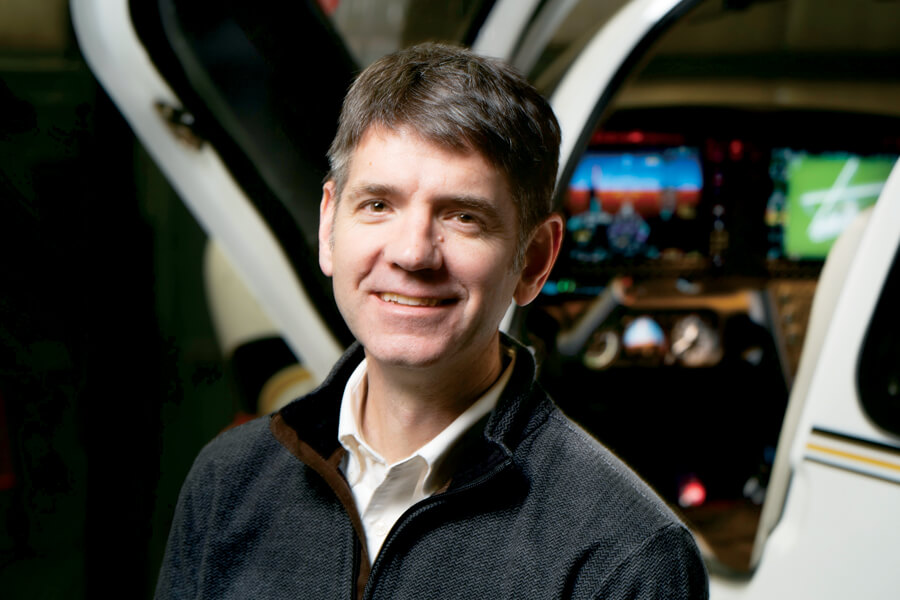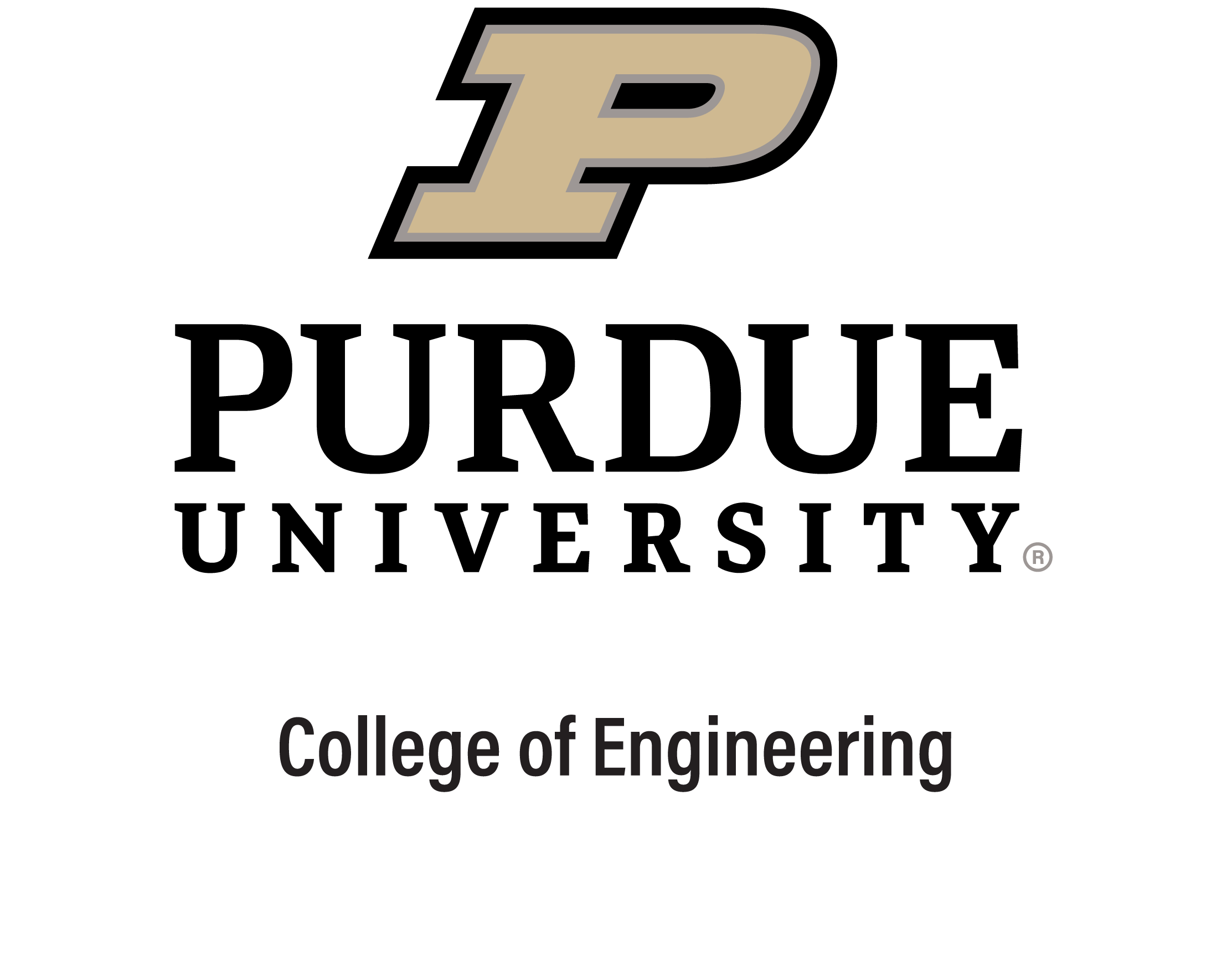
Researchers affiliated with PEGASAS, the Federal Aviation Administration Air Transportation Center of Excellence for General Aviation, have launched a prolific array of projects over the past six years to improve general aviation.
“We have a huge diversity of projects,” says William Crossley, professor of aeronautics and astronautics and director of PEGASAS, which stands for Partnership to Enhance General Aviation Safety, Accessibility and Sustainability.
Its fabled namesake is Pegasus, the winged stallion of Greek mythology. So, it’s only fitting that the Purdue-led PEGASAS is earning a lofty reputation, launching over 30 research projects since it began operating in 2013.
One bragging point, Crossley says, is that PEGASAS has brought in more than $15 million to date, far more than the $500,000 initially targeted annually for the center.
“That’s a sign of success and shows that the FAA values what we are doing,” he says.
PEGASAS has become a go-to resource for the FAA to consult on a plethora of general aviation issues, Crossley says. Specific topic areas include airport technology, airport safety, airport pavements, software and systems, human factors, weather technology in the cockpit, and structures and propulsion.
The United States has the largest and most diverse general aviation community in the world, with more than 1 million registered aircraft. General aviation is a broad category encompassing all aircraft other than commercial air carriers and commercial cargo carriers. It ranges from single-engine planes to helicopters and business-class jets.
Six core members make up the center: Purdue, The Ohio State University, the Georgia Institute of Technology, the Florida Institute of Technology, Iowa State University and Texas A&M University. Affiliate members include Arizona State University, Florida A&M, Hampton University, Kent State University, North Carolina A&T State University, Oklahoma State University, Southern Illinois University (Carbondale), Tufts University, Western Michigan University and University of Minnesota, Duluth.
Engineering and Polytechnic Collaborations
Faculty from Purdue College of Engineering and Purdue Polytechnic Institute collaborate on PEGASAS research and testing. Researchers, for example, are working to better understand why pilots sometimes fail to react quickly enough to changing and hazardous weather conditions.
Pilots have access to a growing wealth of weather information from portable electronic devices and other sources. Yet, they still have difficulty adjusting in real time to changing weather conditions. The Weather Information Latency Demonstrator (WILD) is part of a larger Weather Technology Information in the Cockpit (WTIC) project that addresses these problems and is led by Barrett Caldwell, professor of industrial engineering; and Mary Johnson, professor of aviation and transportation technology.
“Development of the WILD as part of the WTIC project represents a nice balance between Engineering and Polytechnic, along with support from colleagues at Western Michigan University,” Crossley says.
Researchers developed and prototyped specialized simulators to study the reactions of pilots encountering weather changes.
Another collaborative project has resulted in the development of a low-cost system that records a pilot’s flight decisions, which could improve proficiency and avert accidents. The low-cost Attitude and Heading Reference System (AHRS) was developed as part of the center’s Safety Analysis for General Aviation project. Karen Marais, associate professor of aeronautics and astronautics and assistant site director for PEGASAS, led research to develop the low-cost AHRS device. Aeronautics and astronautics graduate research assistants Arpan Chakraborty and Nicoletta Fala, working with computer science graduate student Leonardo Teixeira, used off-the-shelf equipment to create the system.
The AHRS tracks and records the plane’s heading, position and speed. These data can then be compared with other pilot data to reveal potential problems.
“For example, you might be losing too much altitude on approach for landing, and a comparison of data would alert you to this problem,” Crossley says. “Ultimately, we want general aviation pilots to maintain the highest proficiency possible.”
The new AHRS represents an affordable alternative to more expensive commercial products. Many aircraft are not equipped with the commercial systems, and it costs thousands of dollars to retrofit aircraft with an Electronic Flight Instrument System, or EFIT, that can record data. The new PEGASAS-developed AHRS device costs a few hundred dollars to build.
The device was installed in the baggage compartment of a single-engine SR-20 aircraft used to train pilots at the Purdue University Airport. The SR-20 aircraft is equipped with a commercial system, so data from the two can be compared.
Marais worked with Johnson on other tasks of the Safety Analysis for General Aviation (SAGA) project, and they are both assistant site directors for PEGASAS.
Boosting Aviation
Get Ready to ‘Rumble’
In another project, Purdue Engineering and Purdue Polytechnic Institute researchers have studied the effectiveness of “rumble strips” to keep pilots from straying onto runways. The strips, normally found on highways to alert drivers to changing road conditions, might be repurposed for aircraft operations. The project was led by Darcy Bullock, the Lyles Family Professor of Civil Engineering and director of the Joint Transportation Research Program, and Sarah Hubbard, assistant professor of aviation and transportation technology.
The research team found that the strips are effective at preventing runway incursions. However, they are best-suited only for temporary applications.
Counting Aircraft
Bullock and John Mott, associate professor of aviation and transportation technology, led another project to develop a practical, low-cost method to count the number of aircraft using general aviation airports. The automatic dependent surveillance — broadcast, or ADS-B, surveillance technology — detects aircraft transponders. It was tested at the Purdue airport.
“Some general aviation airports don’t have towers, yet officials need to know how many airplanes are operating there,” William Crossley, professor of aeronautics and astronautics and director of PEGASAS, explains. “This is a low-cost, accurate way to do so.”
Bio-Based Fuels
Other PEGASAS research involves bio-based fuels for turbine engines. “Aircraft rescue and firefighting personnel are concerned that if there is an accident, these fuels don’t burn the same way as conventional fuels,” Crossley says. “This means we will need different retardants and suppressants to control fires.”
The work is led by Gozdem Kilaz, assistant professor of engineering technology and aviation technology (by courtesy); Li Qiao, associate professor of aeronautics and astronautics; and Jay Gore, the Vincent P. Reilly Professor in Combustion Engineering.



